We’ve published a number of riding tips previously, from avoiding target fixation to braking to body positioning and so forth. To sum them all up, plus adding a few more, here are 10 steps to be a better rider.
Again, as we’ve mentioned many times before, you have to “check” your riding at all times not only to be able to go faster, but more importantly, to be safe. Being safe means you can continue to ride forever.
Don’t daydream. Always evaluate your surroundings, speed and space. Be proactive in spotting potential danger – if you find yourself in close call situations all the time, it could pretty well mean that you’re not on top of things.
Not looking far enough could also be attributed to losing concentration. The human vision will default to a view of just a few centimetres in front when a person doesn’t focus on anything in particular. When that happens, reaction time is increased. Additionally, peripheral vision is reduced, and you can’t spot that car swerving into your lane quickly enough. So, keep your eyes up and look ahead as far as possible while continuously scanning to keep your vision and mind active.
As we mentioned above, keep your vision wide by scanning the road back and forth – imagine a forward-looking radar. A wide vision helps to slow things down at any given speed. Sure, zeroing down your vision is fun at speed, but you’ll feel overwhelmed when something unexpected occurs. Keeping your vision wide also avoids from getting surprised from the sides. Finally, a wide vision helps to avoid target fixation as it allows you to spot a route of escape.
Seat yourself back a bit by leaving 2.5 cm (1 inch) between the tank and your crotch. You will feel that the steering is lighter, and your upper body will have a more natural bend. Being natural results in better comfort too. Remember to clamp the sides of the fuel tank with your knees and inner thighs to free up the torso. And keep ride with the balls of your feet on the footpegs.
There are still too many riding with straight arms. Keep them loose. Loosening up the arms loosens up your grip on the handlebar, besides your torso, shoulders, neck and back. The benefits are increased comfort, the bike handles better, and more control. The bike handles better because you allow it to do what it’s supposed to. Riding tense means you’re fighting the bike.
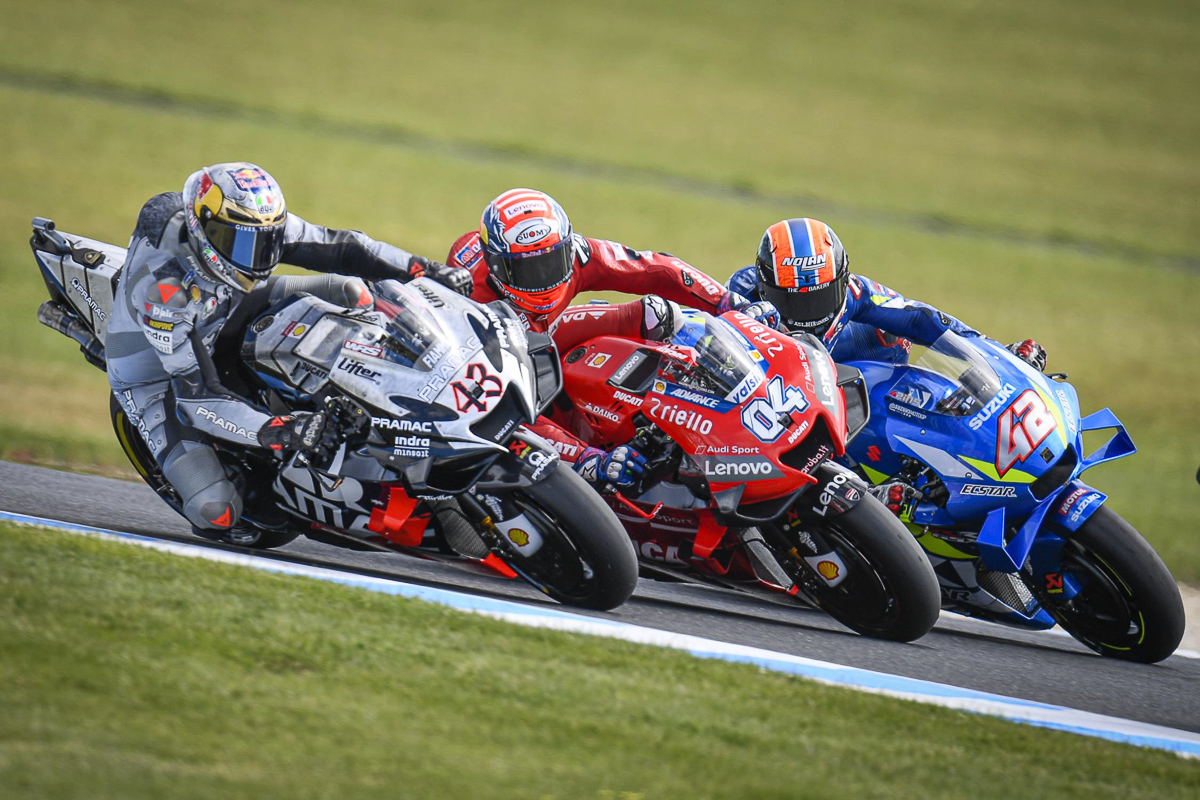
Notice how smooth professional riders transition from accelerating to braking to turning and back to accelerating? Being smooth avoids feeding extra forces into the bike which causes instability. Being smooth also means that you’re not cramming too many inputs at one go for example, grabbing the brake while downshifting and turning. Here’s a little secret: A smooth rider isn’t afraid of worn tyres or slick road conditions.
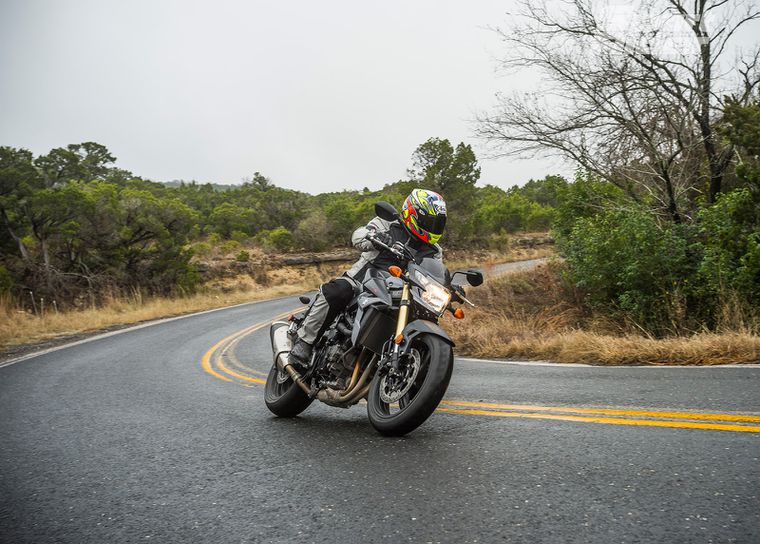
Speaking of slick road conditions, riding in the rain teaches you the necessity of being relaxed and smooth with your controls. Besides that, you’ll also discover how much your bike and tyres are capable of. All our Editors love riding in the rain!
We’ve written about this before: Don’t treat your brakes as an on/off switch. Instead, find an empty road or parking lot and practice your braking technique. Find how much pressure you need to slow the bike down to a desired speed. Discover how much distance you need to bring the bike to a complete stop from certain speeds. Find how much pressure it takes to trigger the ABS and how it feels when the system activates. Learn to steer the bike when ABS triggers. Know how the bike feels like when a tyre skids. Don’t forget to practice trail braking, too. Last but not least, clamp your knees on the tank when you brake and leave your arms loose.
We can’t stress this enough. Riding a dirt bike teaches you the real basics of throttle control, braking, body positioning, rider inputs, traction and everything else you can shake a stick at it. We understand that many are concerned about safety when riding in the dirt, but guess what, you don’t have to jump like Gabit Saleh in order to ride in the dirt. Just go to Most Fun Gym or Moto Maniac and ask to practice on a flat piece of ground. (That’s what we do.) You’ll be surprised how much better you can after that!
This goes without saying. We think probably less than 1% have done so and that’s what contributes to the exceptionally high number of motorcycle accidents in Malaysia (among other causes). There are so many to choose from that could fit your budget and type of bike you ride.
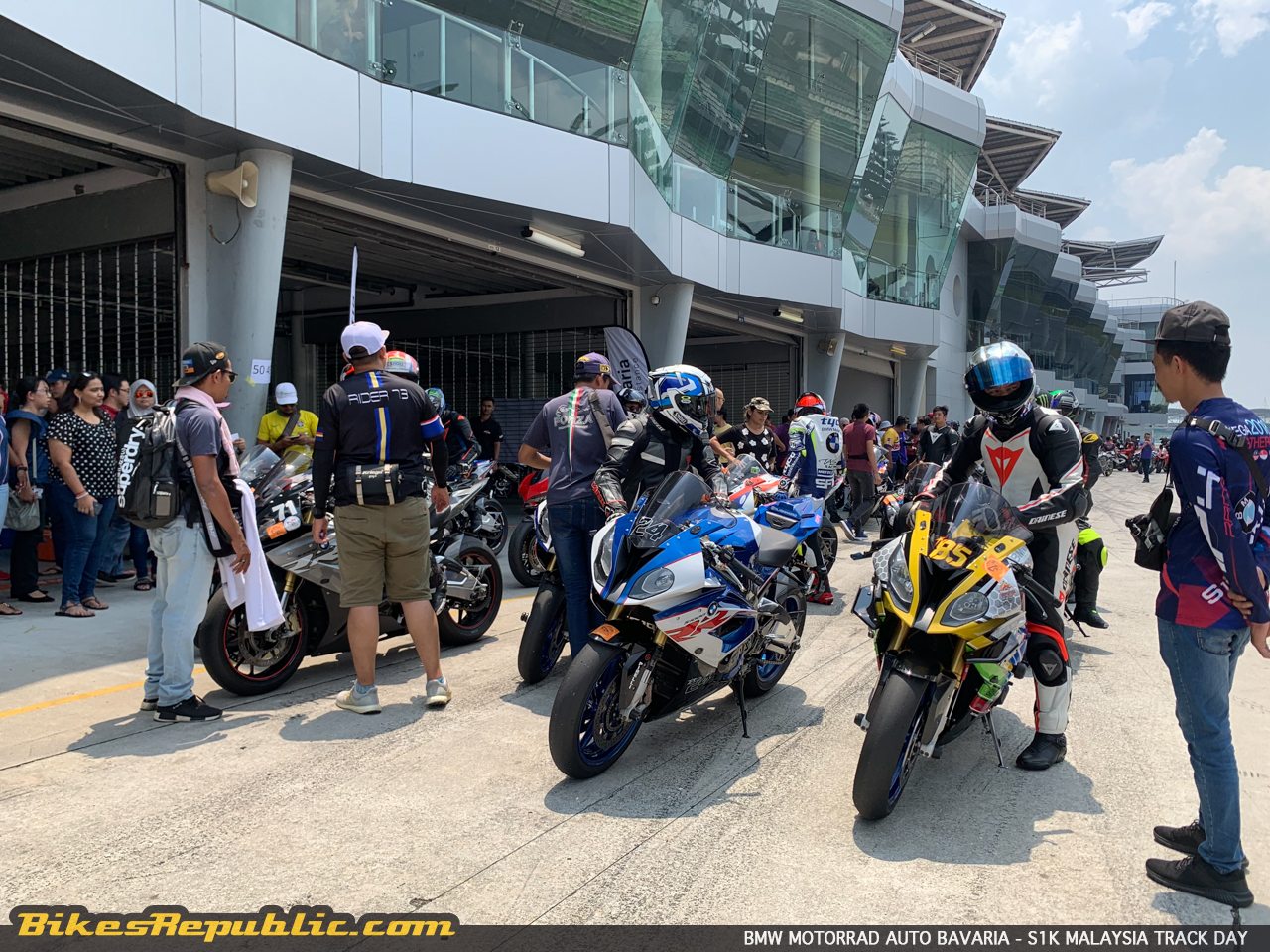
Attend a trackday. You don’t have pressure yourself into riding at Azlan Shah’s pace. Who said you have to, by the way? Go to the track and have fun riding around in a controlled environment while you practice your skills. You can even make new friends who are faster and lead you around the track.
A corner looms ahead. It looks like a fast one, so you line it up and steer in. Only to find that the apex is actually further inside. Much further.
The road seems to double-back on itself and here, you’re in the outside 1/3 of the corner and just tipping the bike in.
What should you do? What can you do?
There are five basic skills that every biker MUST possess: 1. Steering; 2. Vision; 3. Throttle control; 4. Brake control; 5. Body positioning/control. Not necessarily in that order, but these skills need to be invariably present.
Let’s keep these five points in mind as we take you through a butt-clenching ride.
This is the most important. Panicking will exacerbate the situation; making it worse when you could actually make it home to your loved ones.
The first thing to happen is your body tenses up when you panic. A tense body will lock your limbs in position and cannot provide effective steering forces anymore.
The best way to overcome this panic or impending panic is to turn your head into the corner along with your eyes (they must be inclusive). Remember that the bike goes where you look. Force yourself if you have to and flick your head to the side and get those eyes focused on the corner’s exit.
Remember how to countersteer. Push on the inside and pull on the outside parts of the handlebar in a quick manner. Doing so will snap the bike over quicker.
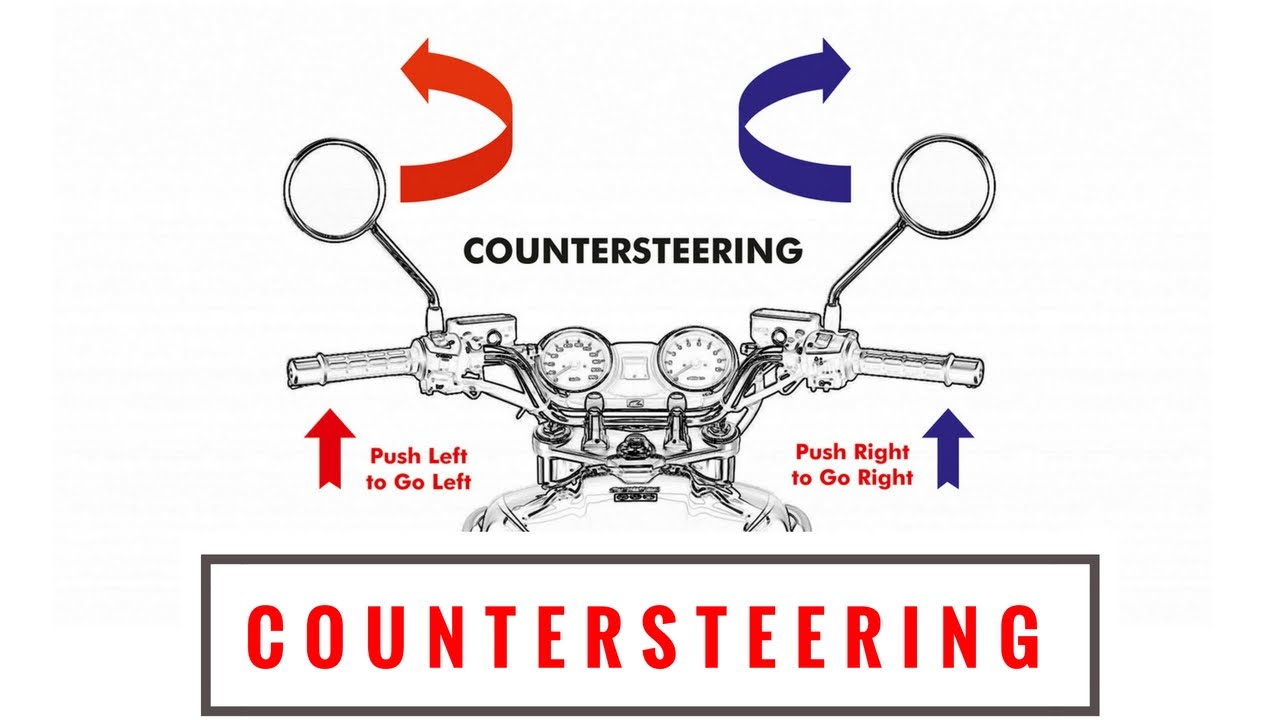
Should you shut the throttle? Open the throttle? Hold the throttle steady?
The answer is don’t do anything. If you’ve closed the throttle from the corner entry, keep it closed. If you have it slightly open, keep it there and don’t roll off or open it any further.
Any change to the throttle at this point will cause weight to shift, changing your chassis balance.
If you chop the gas, weight will transfer to the front tyre and force the bike wide. Yes, wide. You’d expect the bike to steer better but the opposite happens as the front tyre’s footprint widens, creating a large patch of resistance. Steering becomes heavy.
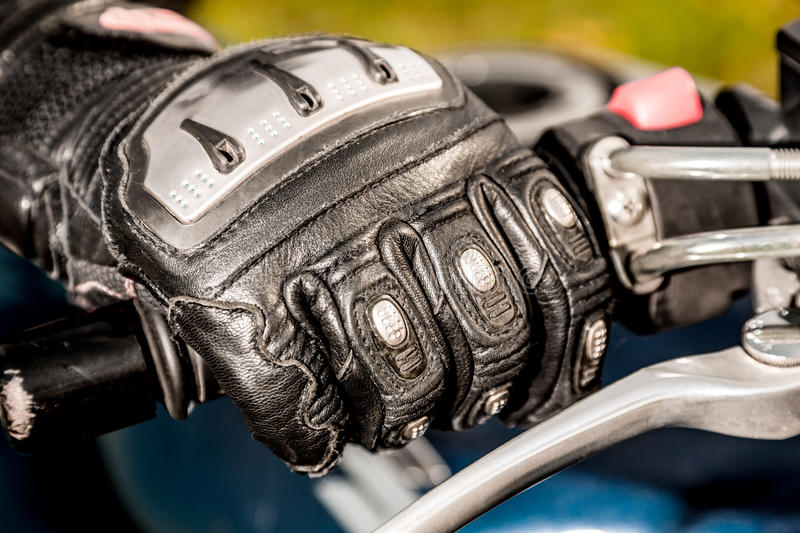
Conversely, weight transfers to the rear when you add more throttle. The front tyre becomes light as the contact patch becomes smaller. That smaller footprint may not react enough to steering forces. Consequently, the bike goes straight. Yup, just like if you chop the gas.
But if you maintain the present state, the motorcycle’s chassis is in its current state of equilibrium. At least, you know that steering effort is still consistent.
If really need be, you can roll off the gas. Roll off as in turning the throttle down smoothly, NOT chopping it.
Once you’re on your line to the exit, apply throttle to balance the bike and blast out.
Stop treating the throttle as an on/off switch. Instead, use it as a tool to control not only the bike’s speed but its chassis balance and grip levels.
The first track exercise carried out by all California Superbike School students is the “one gear, no brake” drill. We went out there, set third or fourth gear, then control the throttle as we went into and out of corners.
Yes, it’s about throttle control, but it also showed us about how modern bikes and tyres can perform beyond our expectations and fears. Make that 99% of us.
Now, you’re in too fast and room is running out fast.
If you’re already leaned over, touching the front brake now spells disaster. Conversely, dab on the rear brake. Doing so will 1. Create a resistance behind the bike’s centre of gravity; 2. Flatten the chassis. The bike will tighten its line.
The rear brake technique is used by virtually all MotoGP riders.
In the case that you’re just about to turn in, you can apply the front brake but not by grabbing it like you’re trying to crush a rock. Instead, squeeze it to feel its bite, then smoothly let out the pressure as you lean the bike over. Once you’ve seen the exit and off the brake, apply the throttle.
So, that’s it. It all starts from not panicking but do practice the five skills above as soon as you have the opportunity. I do so everytime I’m on my bike. I’d like to add that these drills don’t have to be carried out at high speeds. In fact, you’ll discover that you learn a lot more when you don’t rush yourself into things.
There seems to be no respite for us Malaysian motorcyclists when it comes to the weather, is there? First it was the superheated days and now the haze is back with a vengeance. What’s next?
But here are a few tips to ease our daily battles with the environment.
5. Quit smoking. We know, this is a long shot of a request. The haze presents the best chance of cutting back or even quitting altogether.
Snatch thieves on motorcycles are the menace of society and cases are still high especially in the Klang Valley.
This writer’s mother was the victim of such miscreants not once, but twice. She was just 10 metres away from the guardhouse of her apartment when it happened the second time. Since her reflex was to hold onto her handbag slipping off her arms, she grabbed hold of it and ended being dragged on the road. Thankfully, she suffered only minor scratches.

There are reports of snatch thefts everyday, so we could take a few steps to avoid being the victims. Just yesterday, a lady motorcyclist lost her handbag and RM 1,000 of cash after eh made a withdrawal at an ATM.
Always hide your flashy jewelry on your neck or wrists. Thieves are creatures of opportunity. If you’re walking, hold the bag in front of you instead of slinging it on your side.
This is especially true for lady motorcyclists. If you intend to leave your handbag or phone inside the carrier (basket), at least hide it under other stuff. Best of all, clip or tie the strap around the basket or motocycle’s neck.
It may not be practical or comfortable for most motorcyclists, but there’s no way to snatch a backpack off your back, unless they rob you at knife point.
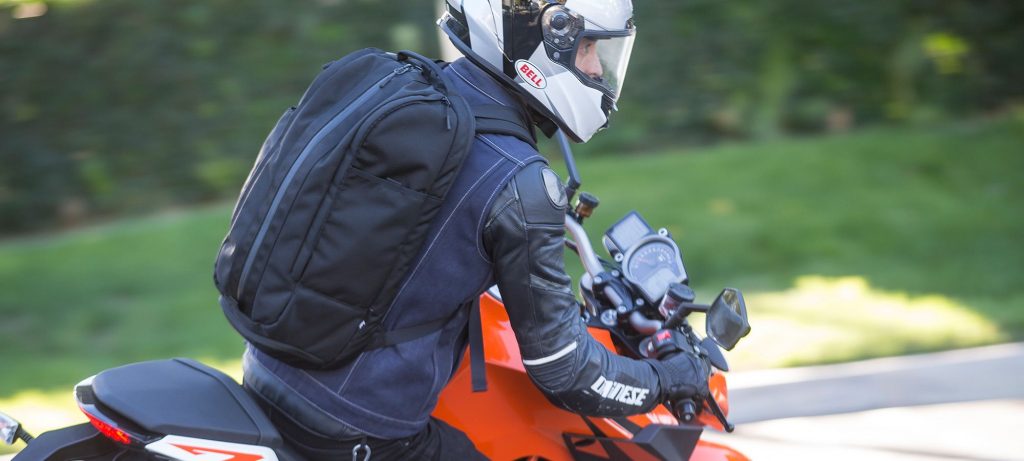
GIVI offers a lockable carrier which installs where the basket is placed. Sure, it reduces the number of things one can carry but is way safer than advertising your belongings.
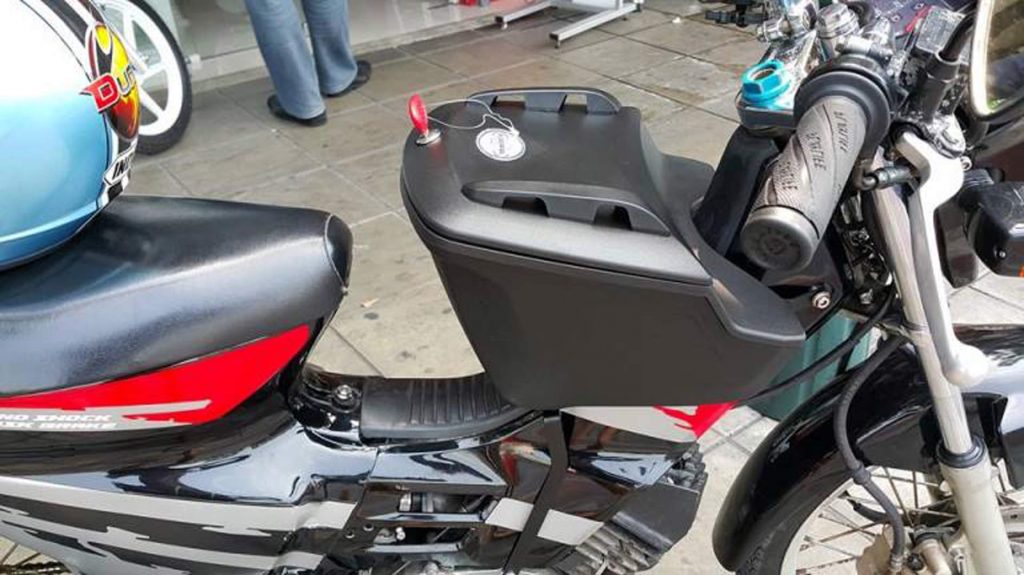
This is the best way. It doesn’t have to be a big box, even a small one is sufficient. Your belongings are also sheltered from the rain.
These are by no means 100% safe solutions but remember that snatch thieves are scum who prey through opportunity. Take away the “attraction” and they have nothing to go on with.
In putting together this “Ten Things Motorcyclists Should Never Do” list, we looked back on another article we’ve written on the ten most common mistakes made by riders, regardless of whether they are newbies or veterans. But I’m sure you could agree that the list wasn’t fully er… full, since we covered only ten items at one go.
Our way of life is fun because it gives us the opportunity to critique our own riding from time to time, as part of our journey to be a better rider and enjoy the sport for as long as we could ride. We hope that you, our brothers and sisters in arms, take a look at our safety tips from time to time.
So, the Ten Things Motorcyclists Should Never Do:
While riding is definitely a form of therapy, it isn’t advisable to do it when your head is still playing images of the fight you had with your boss or spouse. The margin of arriving safely on a motorcycle is very thin, unlike if you were driving, so you need to pay 100% attention to your riding. So, take a moment to cool down before you decide to ride up to Gohtong Jaya.
Every rider knows that we’d lose if we choose to be insistent against bigger vehicles, be it our fault or otherwise. Yet, many of us still fight against other road users when the red mist descends. Truth is, I do get angry at idiotic drivers at times but there’s no point in ending up being crushed to hamburger on the road. Let them go because karma will deal with them, Insy’Allah.
Lingering in the blindspots of other vehicles (including other motorcycles) is one of the most dangerous thing to do in traffic. The other vehicle may swerve into you since the driver doesn’t you’re there. We Malaysian motorcyclists are a lucky lot since there is no law against traffic filtering and lane splitting, so let’s use that privilege effectively. Just remember to keep moving at a pace no more than 40 km/h faster than the traffic around you.
Are you sure others are giving you way? Do you think they realize you’ve stationary at the junction? It’s always best to ride with a certain level of paranoia. While one may argue doing so takes some of the joys out of riding, being safe beats hitting the ground. Or a car.
There’s a simple gauge to this. If you constantly feel stressed out that you almost hit a car or running wide in corners, you are over your limits (lack of training, notwithstanding). Read up on riding tips or better yet, seek out some advanced training to unlock your limits correctly. In the meantime, slow down.
Remember our earlier post on the basic working principles of a four-stroke engine? (Click on the link below to read more.)
We came across this nugget of a video while scouring through the thick web surrounding YouTube videos and thought it’ll be interesting to share with our Bikes Republic followers.
Destin Sandlin, the owner of the YouTube channel SmarterEveryDay (SED) had heard about some guys – Phil, Mike and Everett – who created a transparent engine head cover and visited them to truly see what actually goes on in the combustion chamber of an internal combustion engine.
The builders took a 1920’s Briggs & Stratton side-valve engine and replaced the stock head with a thick perspex cover. Destin then shot the action at 20,000 frames per second.
Let’s watch the video below:
The video clearly shows the four distinct strokes of a four-stroke: Intake, compression, power and exhaust. But what’s really apparent are the movements of the fuel/air mixture, combustion flame propagation and exhaust gas evacuation.
Remember that we also spoke about the spark being introduced before the piston actually arrives at TDC (top dead centre – where the piston is at its highest point in the cylinder) during the compression stroke? Well, you could see that here too.
Recently while testing the Triumph Street Triple RS, I had someone ask me if the bike was a three-stroke. There was another occasion when I had a small argument with another person who insisted that the KTM 1290 Super Duke GT was a two-stroke. I wouldn’t give a second thought if those guys were motorcycle neophytes, but they were riders, and it happened many times over many years. What happens if it’s a BMW K 1600 or Honda Gold Wing? Do they have six-stroke engines?
It seemed like this phenomenon has been rampant for the last twenty years in our country. OMG.
There are two common types of power cycles for gasoline engines: Four-stroke and two-stroke. Let’s see how a four-stroke works. There’s also the rotary engine and Atkinson cycle engine, but they’re uncommon.
First and foremost, an internal combustion engine needs to combust fuel and air. The force from this combustion is transferred to mechanical energy. Hence, a four-stroke engine takes four distinct strokes to produce the power to move a vehicle.
Let’s take a look at the basics.
Also called suction, this stroke begins with the piston at top dead centre (TDC), as it travels downwards toward bottom dead centre (BDC). The intake valve opens and the piston travelling downwards causes a negative pressure (vacuum) in the cylinder, sucking in the fuel/air mixture and filling the cylinder.
As the piston travels back up from BDC to TDC, the intake valve closes and traps the fuel/air mixture inside the cylinder. The piston compresses the mixture in preparation for combustion.
The crankshaft will have travelled 1 full, 360o revolution (1 RPM) when the piston reaches TDC.
Also known as ignition or power stroke. The sparkplug (or sparkplugs) fire, igniting the compressed fuel/air mixture. The pressure raises by 3200 to 5000 kPa (32 to 50 bars), and the temperature by 600o Celcius.
The compression pressure forces the piston back downwards to BDC, creating the mechanical work (kinetic energy) to turn the crankshaft.
Also known as outlet stroke. The exhaust opens as the upward movement of the piston pushes the burned gasses out past the exhaust valve, into the exhaust port and exhaust pipe.
The crankshaft completes two full revolutions when the piston fully reaches TDC. A four-stroke engine needs two RPM to produce mechanical power. Thus if you hold 10,000 RPM for one minute on the tachometer, there are 5000 power strokes in that one minute. Yes, that’s how hard the engine is actually working.
As we mentioned above, this are the basics of how a four-stroke engine works. There are other little details that we will discuss in the future, such as ignition timing which actually emits the spark before the piston fully reaches TDC, so forth.
Back to the opening story, no, there is no three-stroke or six-stroke engine. The answer I commonly use is, “It’s a one/two/three/four/six piston, four-stroke engine.” Or just show them this article.
The helmet protects your head from impacts and injury, and it’s always in your best interest to take good care of it in return. However, a brain bucket doesn’t need intensive maintenance like say, the bike, but it does need some tender loving care.
We see it all the time, and yes, we’re guilty of it too.
Grabbing it by the chinbar is easier, of course, but that could result in detaching or damaging certain components, in addition to the padding behind the chinbar itself. Winding the arm under the chinstrap and out the eyeport is stable, but you chance detaching or breaking the breath deflector.
The best way of carrying the helmet correctly is to tie up the strap securely and carry it like a handbag or just use the bag which it came in.
Since a helmet is bucket shaped, it becomes a convenient basket for the bike keys, ciggies, lighter, and of course, the gloves.
If the sweat from your hands and traffic pollutants can eat away at the stitching of the gloves, it’ll destroy your helmet’s comfort lining soon enough. The gloves will also cause your helmet to smell funky.
So remember, the only thing that should be inside the helmet is your head.
This may sound as an unnecessary reminder, but do place the lid the correct way up. There’s a reason why there’s a rubber gasket that runs around the bottom.
Placing the helmet upside down will not only destroy the paint and finish but may also start to compromise the shape and strength of the shell if such mistreatment is kept up.
Manufacturers usually recommend cleaning the shell and faceshield with just soap and warm water. However, there are many helmet cleaners in the market that are convenient to carry along during a ride or to the track.
Experiment with a new cleanser on your helmet by starting on a small section before committing to the entire helmet or faceshield.
Do not ever use harsh cleaners such as dishwashing liquid or lighter fluid (to remove sticker residue). Another note: Do not ever use glass cleaner on the faceshield as it will erode the sensitive coating. Don’t ask how we found this out.
Motorcycle mirrors and handlebar ends are understandably convenient places for placing the helmet.
However, it isn’t the right thing to do, as the shape of the mirror and handlebar end may deform the EPS lining of the helmet, leaving it weaker in certain spots. The EPS liner must be as uniform as designed to spread the shock of impact.
Do make it a point to clean your lid at least once a year. This writer personally does it every three months or so, depending on usage.
Remove any removable liner, wash in warm water and clean the rest of the helmet. Use Q-Tips to clean hard-to-reach places such as vents.
A helmet should be dried out first before being stored in a cabinet or the bag.
But please use care when drying it. Best to remove the comfort liners and allow the inside of the helmet to dry naturally. Using high heat everytime the helmet gets wet will soon weaken the glue in some parts.
The comfort liners should also ideally be air-dried but if heat is needed, you may use a hairdryer for the padded side and not over the plastics, to again, preserve the glue.
Dropping the helmet from a low height may not necessarily damage it, but best to have it checked over by the manufacturer. On the other hand, a headgear that has never been dropped needs to be replaced after a maximum of five years of use from the day it first went on your head.
There are certain manufacturers that okayed the use of automotive waxes. Use the soft variety, sparingly and wax gently by hand.
The faceshield mechanism should be lubricated with silicone lubricant for better action. Arai includes the lubricant with every lid they sell.
The weather has been mighty unpredictable in the Klang Valley lately. The days invariably start with burning white sunlight and scorching heat, only to give way to sudden heavy downpours. If the downpours continue for more than two hours, we could find ourselves caught in flash floods.
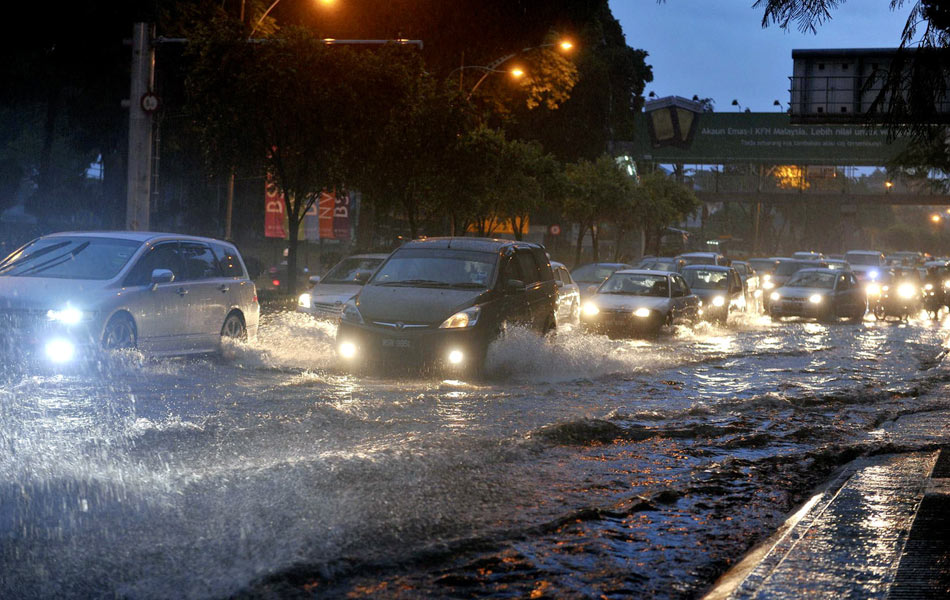
While it’s safest to sit out from riding in pouring rain and flooded roads, there’s no escaping it at times, especially around flood-prone areas where the roads remain flooded even after rain has stopped.
Here are our tips for riding through flash floods (and deep puddles of water).
It’s just like adventure riding. No sane adventure rider will just banzai headlong into an unknown body of water without first inspecting its depth, potential hazards underwater and exit on the other side.
While you may not have to get off your bike and walk through floods on the road you travel on each day, you do need to stop and look for clues. If there’s another vehicle pushing through the water, note how deep it is. Observe if there’s a strong water current from one side of the road to the other.
If the water’s too deep or current’s too strong, forget it. Just wait for it to subside.
If you don’t already know the location of your engine’s air intake, now’s the good time to start. Check if it’s high enough above the water.
Riding through floods is no different from riding through a river when adventure or trail riding, so stand for better low-speed stability, meaning there’s more control when you crawl ahead at 10 to 20 km/h.
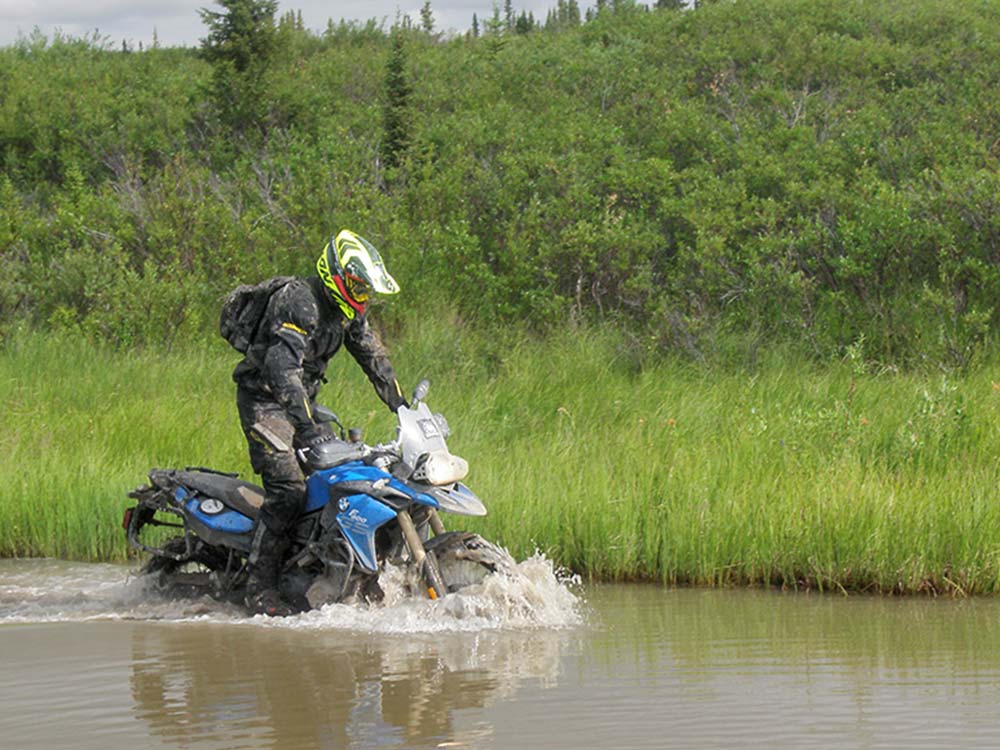
This goes without saying.
Throwing up a big splash may look spectacular in pictures but it isn’t a good practice in real world situations. Hitting a deep body of water at speed would most likely have the water act as a liquid brake/barrier. The bike will cut through the first few metres easily before coming to a sudden halt and causing the rider to lose control (or even thrown off).
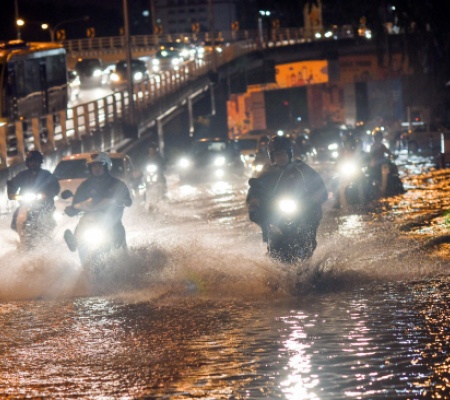
Keep your speed as low as possible and steady to keep the water’s bow wake below the height of the engine’s air intake. Remember, you’re riding a motorcycle, not a jetski.
It’s also best to stay off the sides of the road and ride in the middle of the lane.
Don’t pull in the clutch or slam the throttle shut.
Maintain a steady throttle and speed in the gear you are in right now, even if you should feel a tyre or tyres kicking loose when contacting something in the water. In fact, you should open the throttle a bit more if that happens.
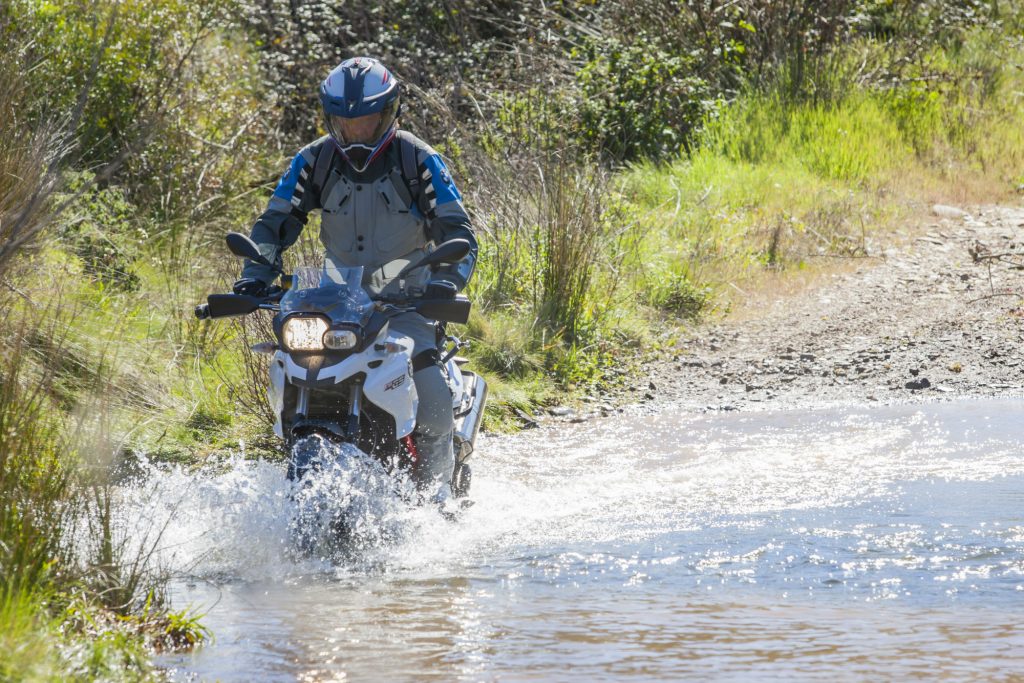
Roll off the throttle smoothly if you need to slow down more and stay off the brakes.
Don’t gun it immediately after exiting the flood. You may increase your speed, but don’t slam open the throttle, without first giving the time for the water or whatever debris collected on the bike to “drop off.”
Also, with the bike still moving, drag the brakes lightly to clean them.
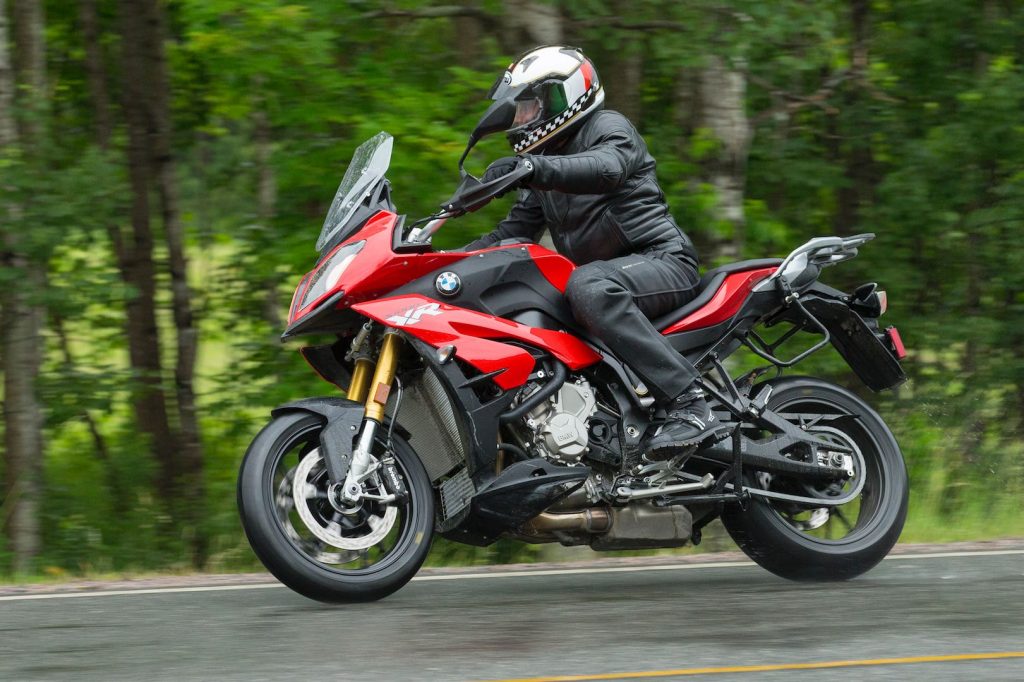
But what if you hit, for example, a pothole and the bike goes down?
Make the effort to kill the engine before you lay the bike down into the water. You’d most probability have the time to do so, since you were riding at a slow speed, right? Right? Regardless, the engine should be shut down as quickly as possible.
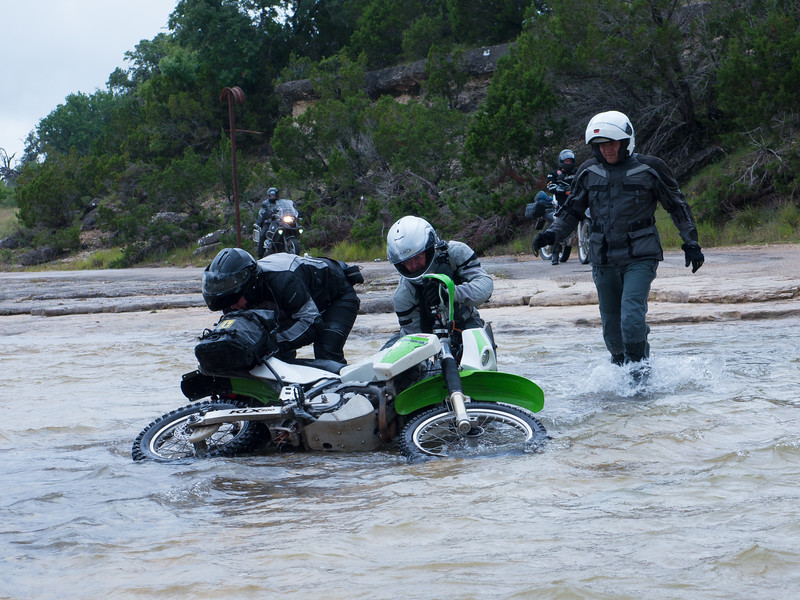
An internal combustion engine is basically an air pump which sucks in air, adds fuel to it, compresses the mixture and sets it alight. But water is incompressible and non-combustible (duh!), and therefore has the potential of causing catastrophic engine damage.
Do not immediately attempt to start a motorcycle that has been lying underwater. Instead, you should pull out the spark plugs and the airbox cover to check for water ingress. If the spark plug electrodes are wet, do not reinstall them, but turn on the bike’s ignition and crank the starter a few times to push the water out of the combustion chamber.
Reinstall only when it’s sufficiently dry.
Riding through a flood isn’t difficult but one should do it with care and logic, obviously. Sticking to the above steps will have you home way ahead of car drivers, instead of ending up swimming in that filthy water. Think of it as urban adventure riding.
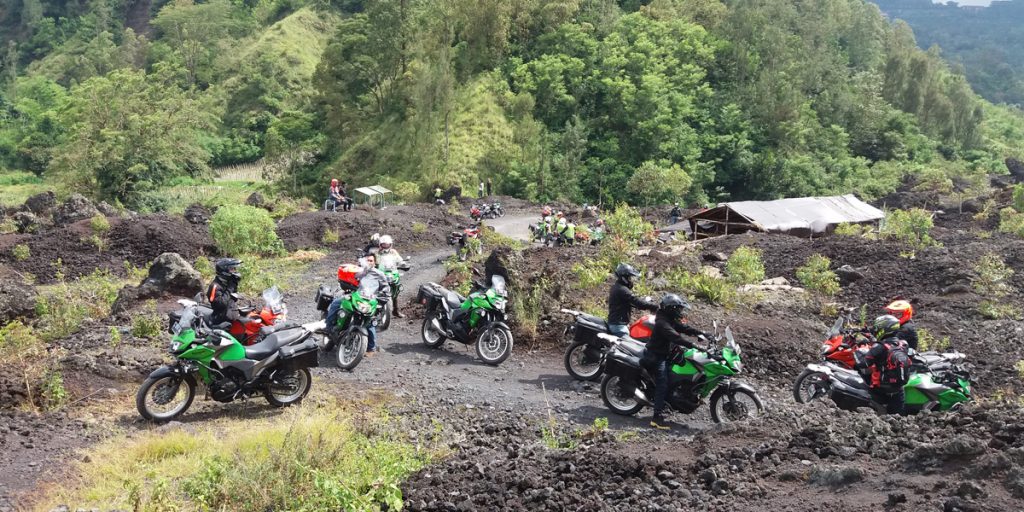
Adventure riding is fun in many more ways than one.
Why not ride an offroad trail or better yet, blaze your own trail to some waterfall in a jungle where no one has been to before, compared to visiting an easily accessible waterfall that’s overcrowded, dirty and dangerous with rubbish and human effluents?
But how does one go about with adventure riding? Some people may cynically say, “It isn’t an adventure unless something goes wrong.” It’s not as bad as that. Think about discovering the many God-made beauties our country has to offer.
Here are our top tips for adventure riding.
1. Get a Proper Adventure Bike
Starting with say, a Kawasaki Versys-X 250 or a Versys 650 ABS. Or just go ahead with a Kawasaki KLX150BF or KLX250 (you may want to leave the KLX450R for the pros, though). But for the sake of simplicity, we’ll just stick to the Versys-X in this article.
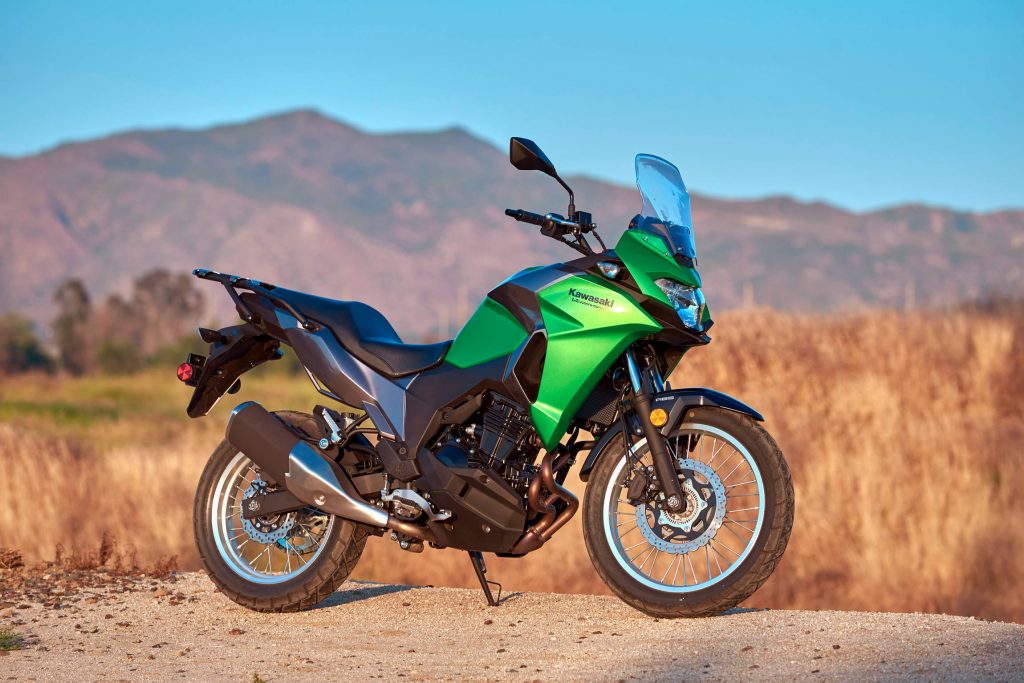
The Versys-X 250 fills the role of a lightweight adventure and commuter motorcycle nicely, as it has a good balance for adventure riding when standing up on the footpegs. It’s also equipped with spoked wheels instead of cast aluminium ones. Spoked wheels are more desirable for adventure riding as they are usually lighter, absorb shocks better and can be adjusted back to shape if dented.
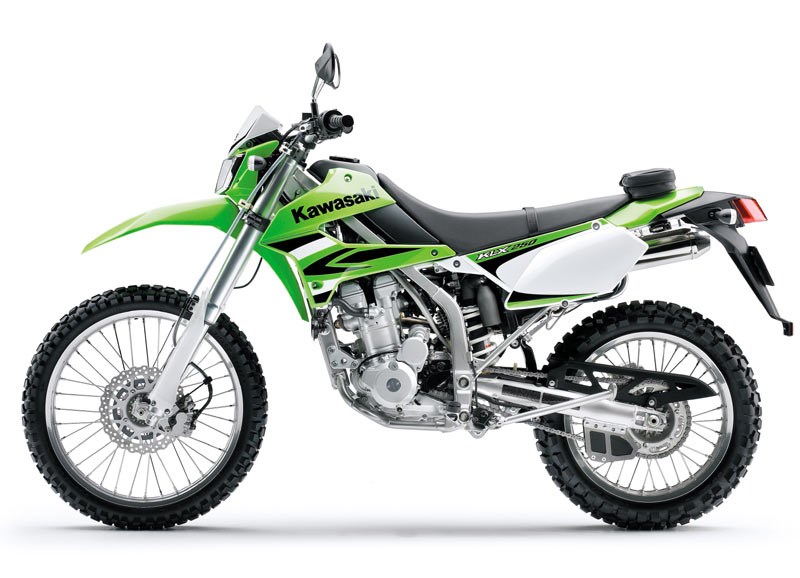
The KLX range is a no brainer when it comes to adventure riding, as they are enduro motorcycles – super lightweight, slim, long travel suspension, big spoked wheels, and torquey engines. The KX models, on the other hand, are competition models for motocross, supercross and conversion to supermoto, thus they are not road legal. But you could always truck it to the starting point of your ride.
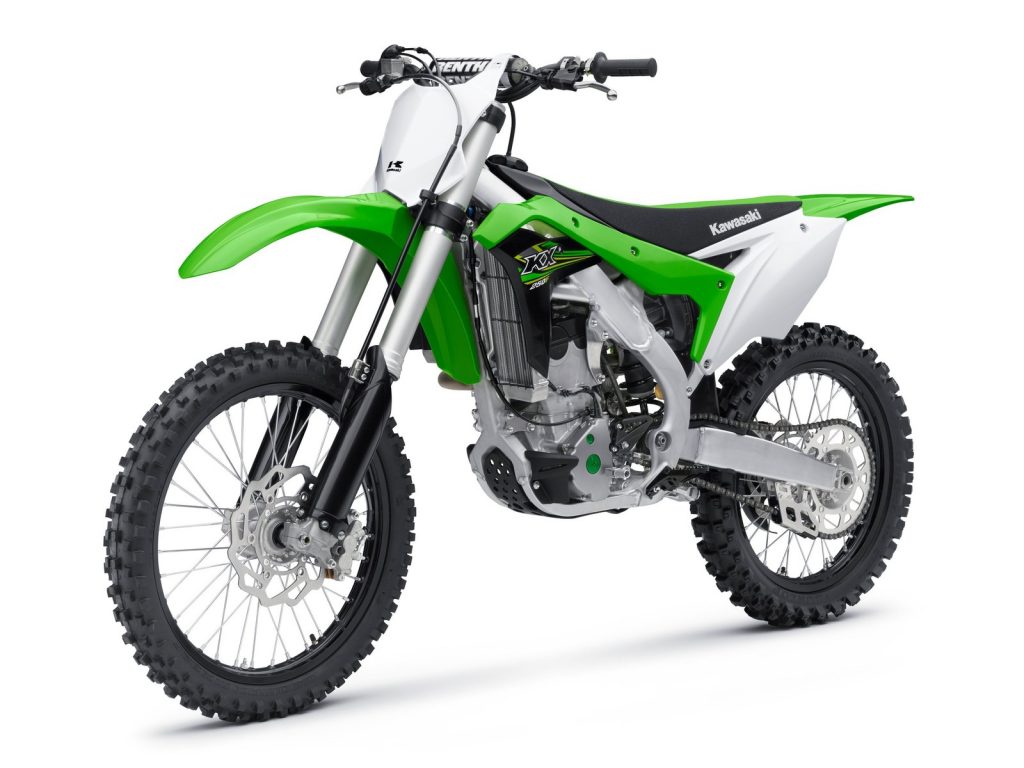
Depending on the severity of offroading on your adventure ride, you may need to replace the Versys-X’s stock tyres to more adventure-oriented ones, otherwise the standard tyres are fine. Adventure-specific tyres not only offer more offroad grip, but they also allow the pressure to be dropped safely (more on this below).
2. Get Proper Training
Adventure riding has its specific set of skills. The route you’re going to travel on may not be severe, but it’s always good to be prepared.
Best way to learn this is at Most Fun Gym (MFG), operated by Malaysian veteran GP rider and legend, Oh Kah Beng. MFG may seem to be a hardcore motocross school, but it’s otherwise in reality. You don’t have to do the jumps. Learning offroad means learning the skills to control a motorcycle over low to no-grip situations through mastering throttle control, brake control, body control, body positioning, vision.
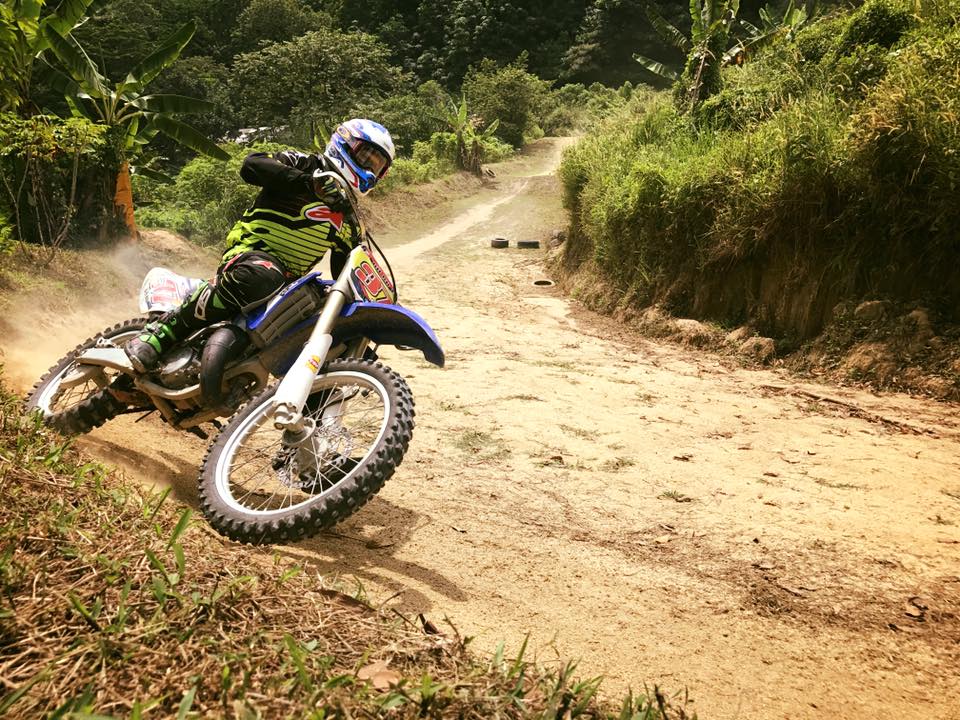
You’ll find your road riding skills improve too. That’s why MotoGP champs ride offroad on their off days.
3. Packing Up
This may seem frivolous but packing plays a big role in a safe hence enjoyable adventure ride.
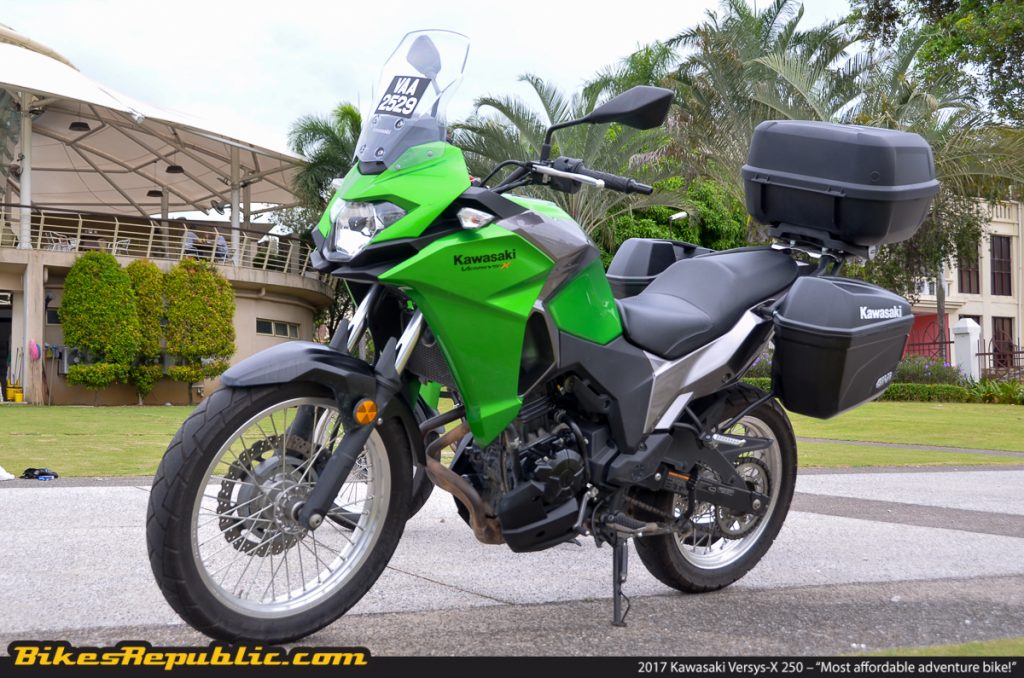
A few extra items should be brought along:
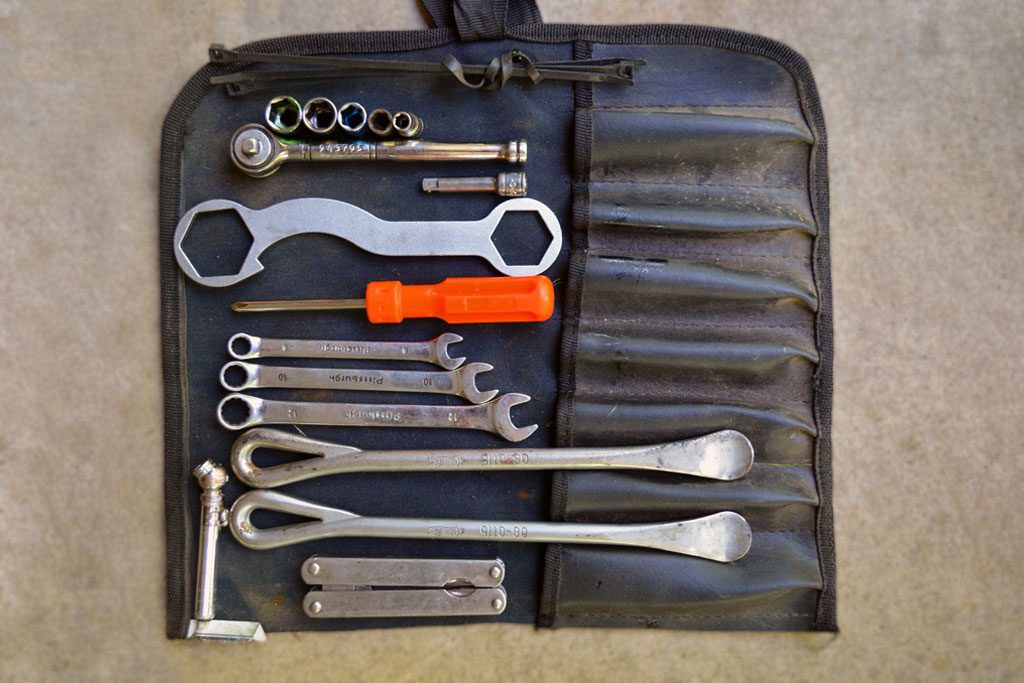
For one, heavy items such as tool kits, or camping equipment should be packed low in the panniers. Locating them high up results in a high centre of gravity and causing the top-heavy feeling (the bike likes to tip over at slow speeds).
Important items like the wallet, phone, cigarettes/vape, lighters should be packed in a waterproof or ziplock bag, and be easily accessible, so you don’t have to dig through everything to look for them.
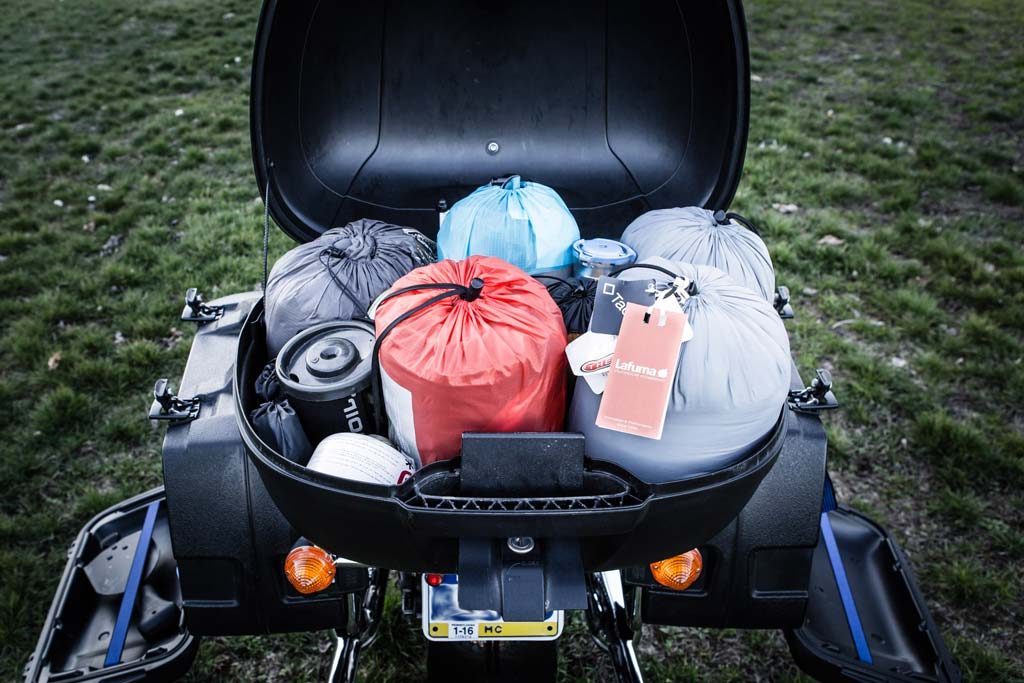
Not least of all, hook the motorcycle’s key to a large keychain. It’ll give you a good chance of locating it should it be dropped into a pool of mud or water.
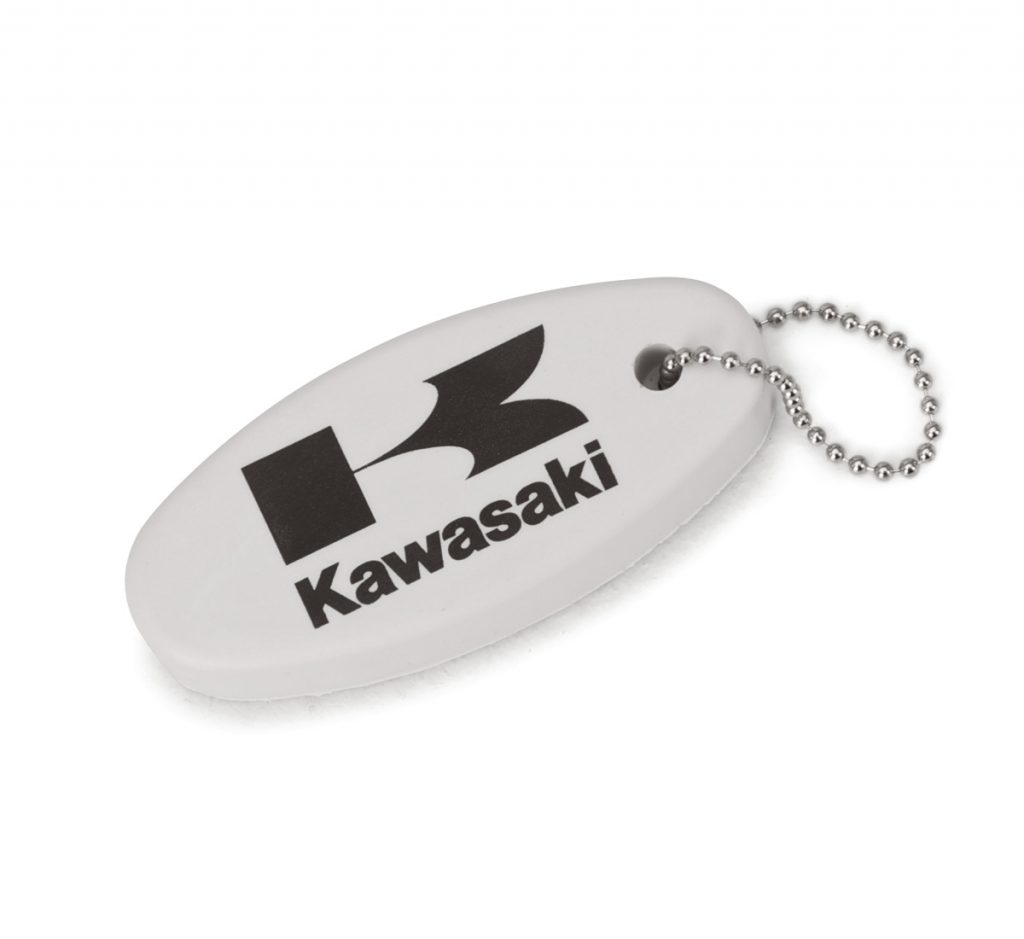
4. Riding Gear
Adventure riding gear is the best as they are designed to be tough, protective and comfortable.
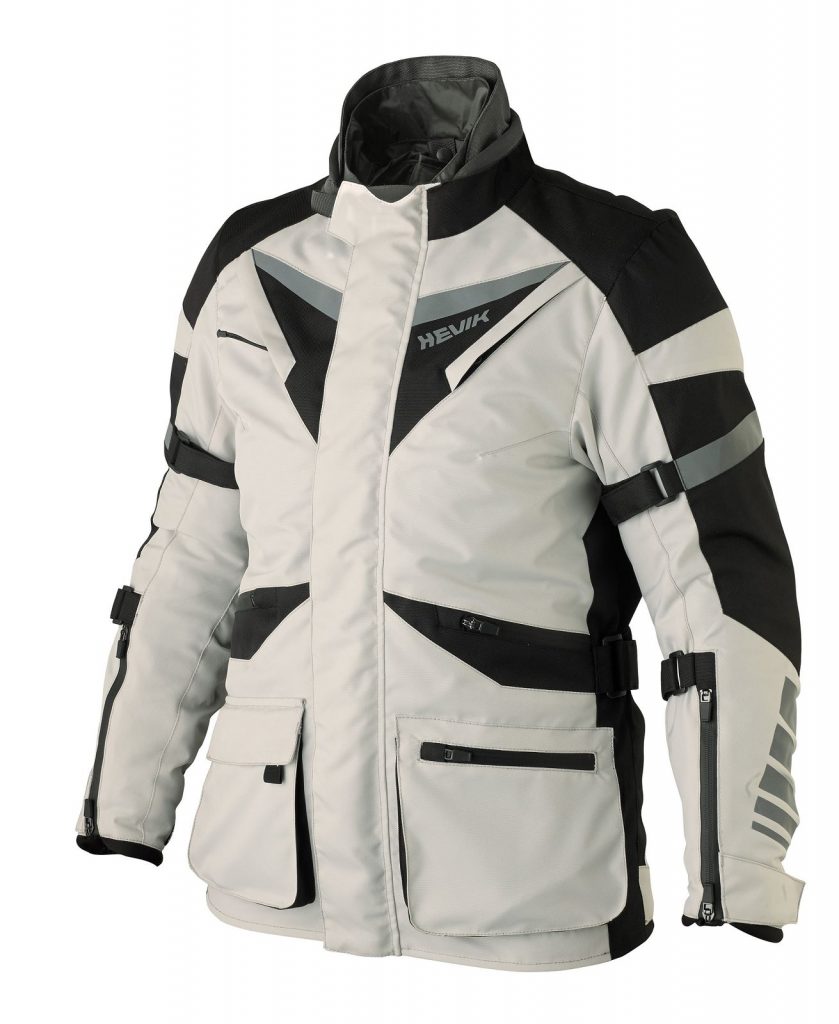
However, if there are certain constraints, motocross wear is fine, but do wear full body armour including knee and shin guards.
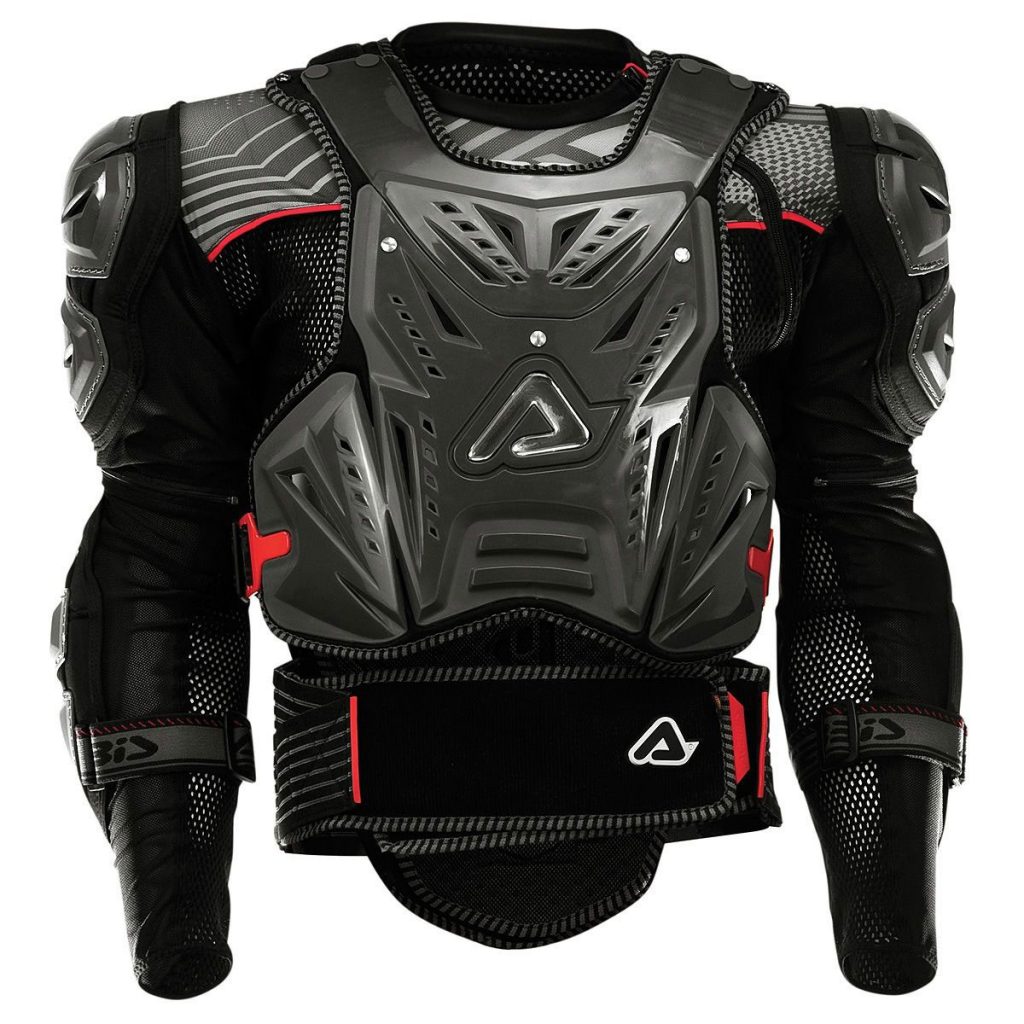
The subject of boots is open to contention, however. Many choose to wear motocross boots but this writer prefers adventure riding boots such as the TCX Track WP. First of all, the latter is more flexible, which increases comfort greatly. Secondly, adventure boots have more “aggressive” sole patterns compared to MX boots. That’s important in case you get off and push the bike. MX boots’ soles are smoother, made for sliding across the track while cornering, which means you may not have much traction in the rough.
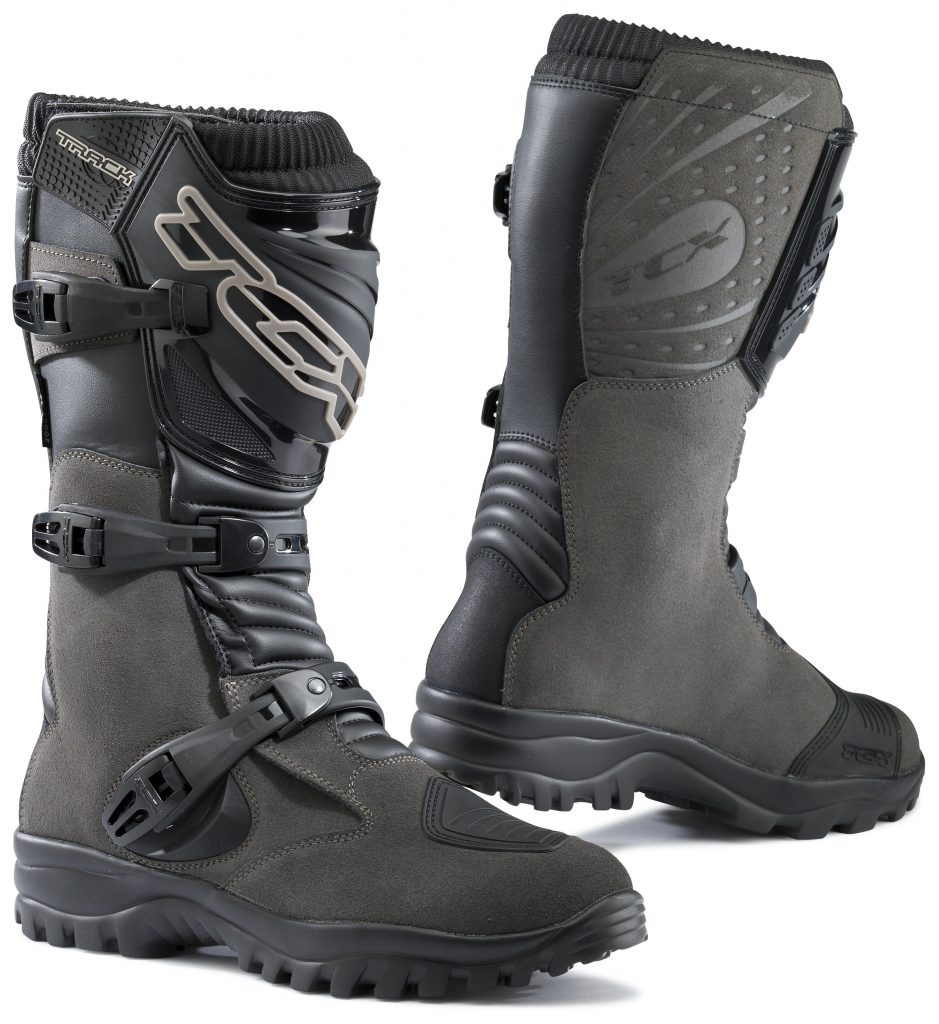
An adventure helmet (full-face with a peak) is good, so is a motocross helmet, as they provide optimal airflow. A roadracing full-face will have you out of breath in a jiffy. An open-face is inadvisable as it doesn’t have the protective chinbar.
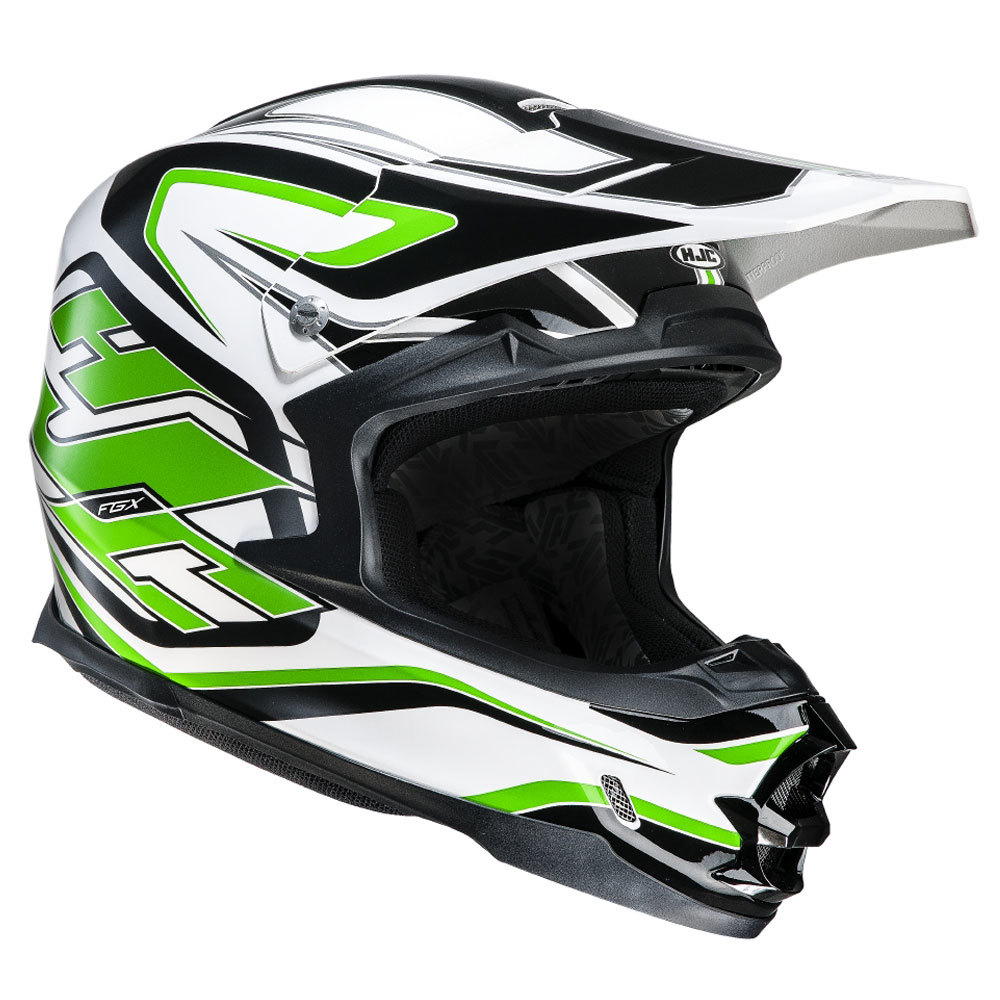
5. Tyre Pressure
With all that out of the way, it’s time to ride.
But hang on! We need to work on the tyre pressures first!
Again, if the adventure ride consists of serious offroading, the tyre pressures needs to be reduced.
Reducing the tyre pressure lets the tread “open up” for a wider footprint. The lower pressure also allows the tyres to absorb shocks from irregular surfaces, rocks and tree roots.
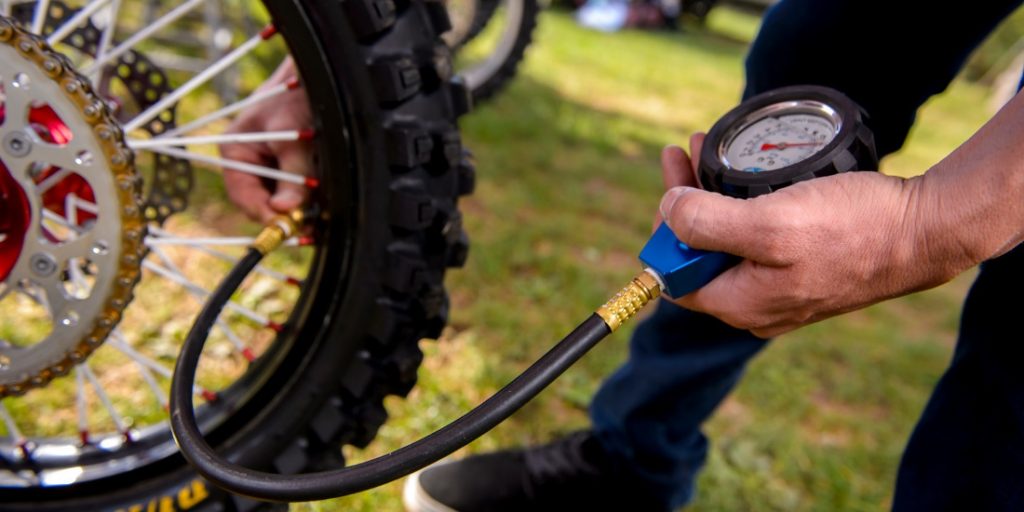
Typical road pressures are anywhere between 200 kPa front to 280 kPa rear. A drop of half will suffice. For example, if the recommended pressure for your bike is 200 kPa, drop it to 100 kPa.
Remember we recommended that you bring a tyre pressure gauge? This is what it’s for. Also, keep in mind to re-inflate the tyres back up to the recommended pressures when you ride home on the road. That’s what the air compressor is for.
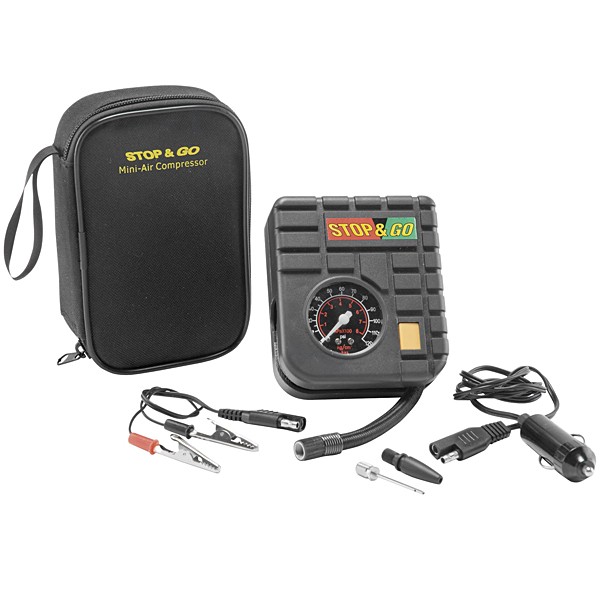
6. Stand Up
Get your buttocks off the seat and bend your knees a little, using your legs as shock absorbers for the rear. Lean your chest slightly towards the fuel tank and splay your elbows outwards, but do not press down on the handlebar. Use them as additional shock absorbers for the front, instead.
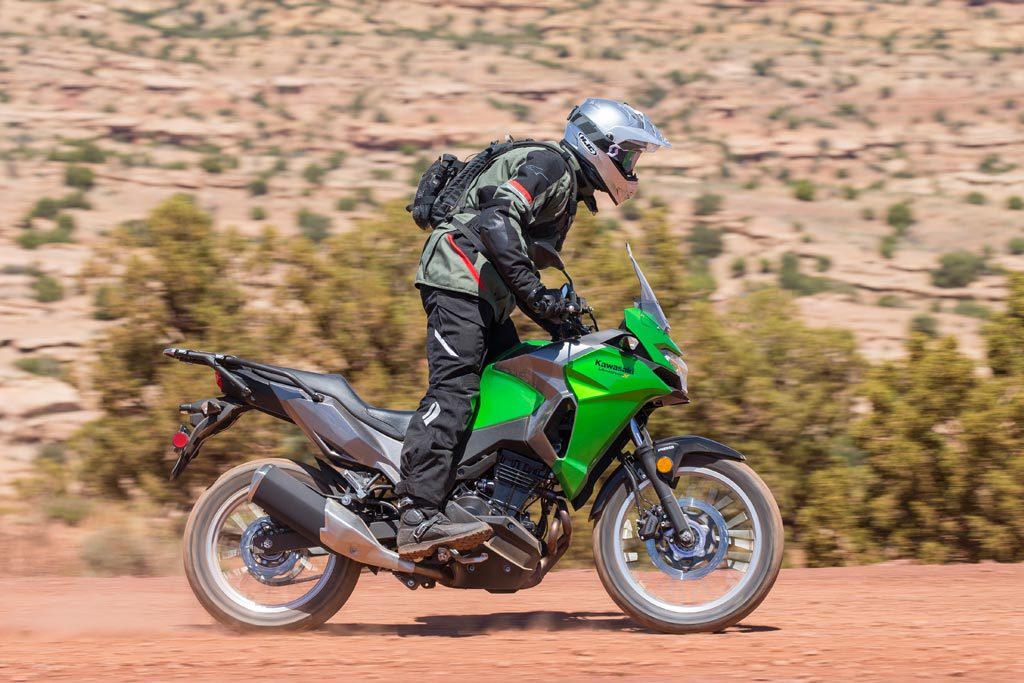
Standing up brings your centre-of-gravity (CoG) down to the footpegs. Also, having your body off the seat means you don’t get hammered when the bike moves around underneath you. Sitting down in the seat, will have the bike taking you for a ride as it snakes, squirms and bounces.
The Versys models have short fuel tanks; the Versys-X’s fuel tank is sloped sharply downwards at the rear so that the rider may position his body weight towards the front when standing up.
7. Ride Loose
Your grip, arms, torso and legs should be relaxed. This allows the bike to do what it’s supposed to, and letting the suspension soak up the bumps. Fighting the bike will only exacerbate a situation. Your job is just to point the bike towards where you want it to go.
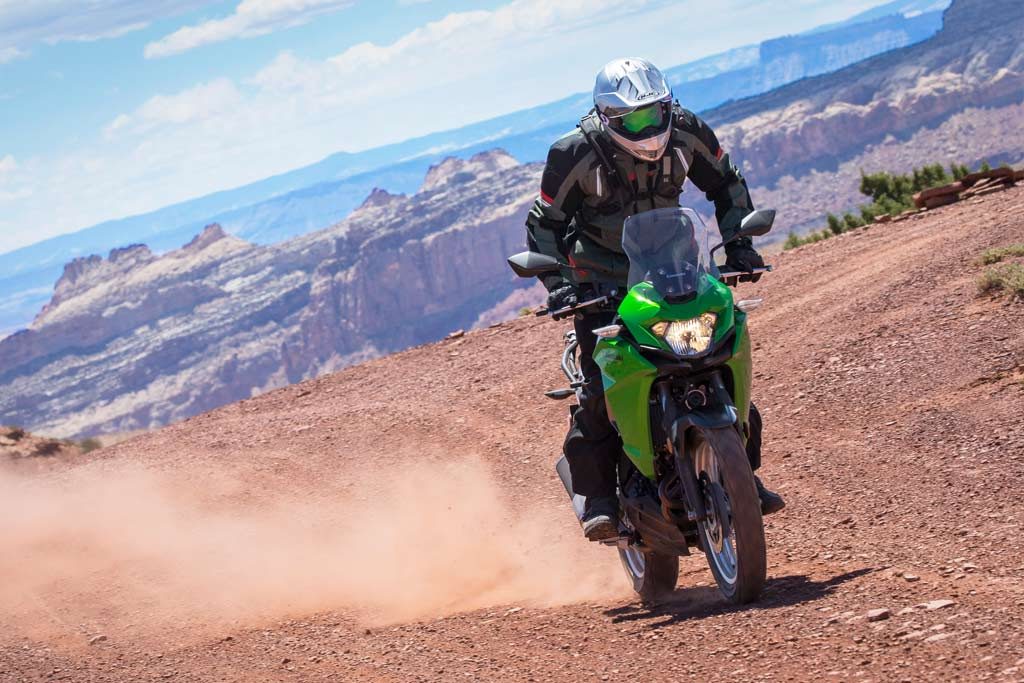
8. Push Down
Cornering on the road or track means leaning your body to the inside of the corner.
When adventure or offroad riding, keep your body straight up and push the handlebar and footpeg downwards.
9. Sit Down
Standing up is necessary when you travel straight or around a gentle curve. But you need to sit back down for sharper corners.
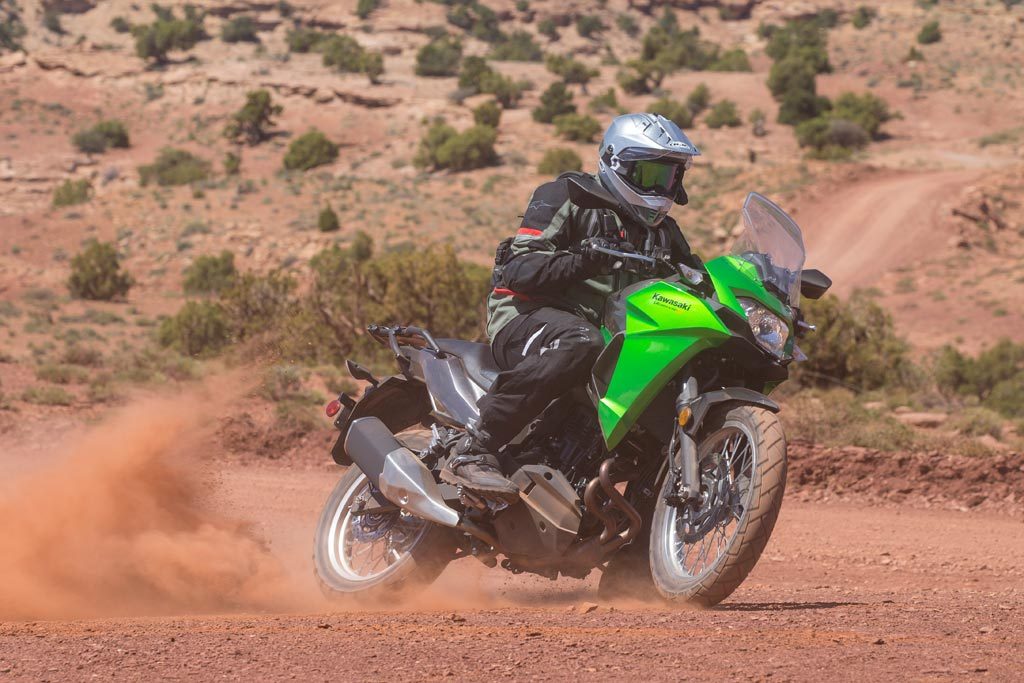
Keep your upper body straight up and push the handlebar downward. Stick your leg out but that leg’s knee should touch the bike. Splaying your leg wide will have the bike sliding and can lead to a lowside.
10. Throttle Control
Throttle control is probably the single most important control in adventure riding (so is on the road, as a matter of fact).
Modulate the throttle smoothly when turning it on or shutting it. Roll it on, roll it off – never slam it open or slam it shut.
If the bike slides in a turn, don’t slam shut the throttle like what your instinct tells you to do. A slide doesn’t mean the bike is totally out of control. It’s just a sign that the sliding tyre or tyres have less traction.
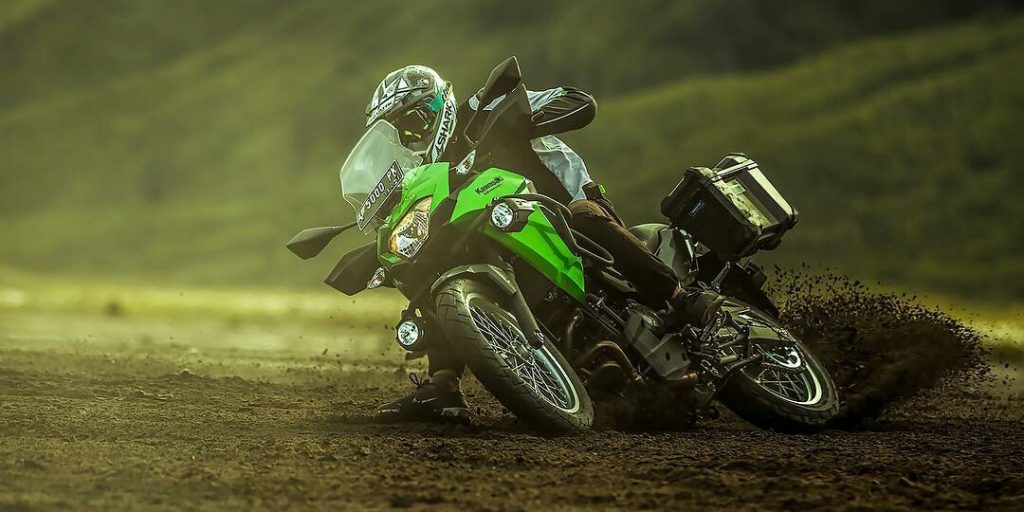
Instead, you could maintain the same throttle position and lift the bike up slightly by either using your leg or the handlebar, or both. If you need to slow down more, remember to roll off the throttle. Cutting the throttle immediately when the bike is sliding will cause an abrupt back-torque (engine braking) and that will result in the tyre breaking all available traction.
When we tested the Versys-X, we noticed that the engine’s power is softer initially, before picking up at 3000 RPM. On one hand, that’s to not scare beginners, but it’s also meant for smoother throttle response when adventure riding. The model is also equipped with a Slip & Assist clutch to control engine braking.
11. Don’t Jump on it!
As with the throttle, you should also be smooth on the brakes. Never grab the brakes but apply pressure progressively.
Additionally, do not brake in a slide. Use the throttle.
Similar to the throttle, the Versys-X’s front brake is a little soft at the beginning of its stroke.
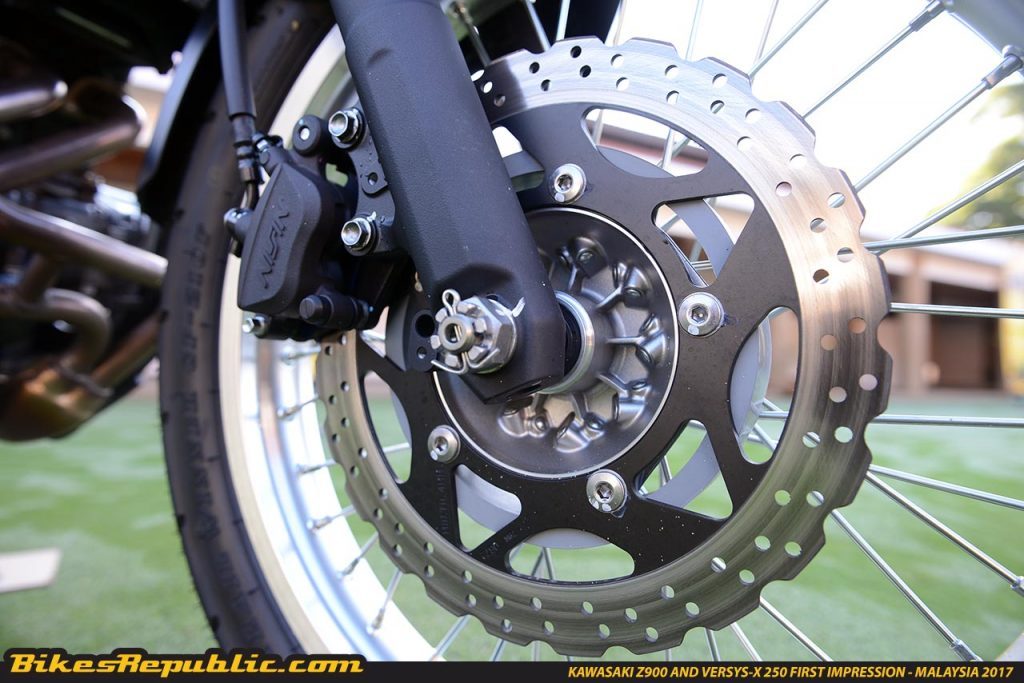
12. Look!
The simple adage applies: “You go where you look.”
Don’t stare at the big rock in your path if you don’t intend to hit it. Look to the sides and you will miss it.
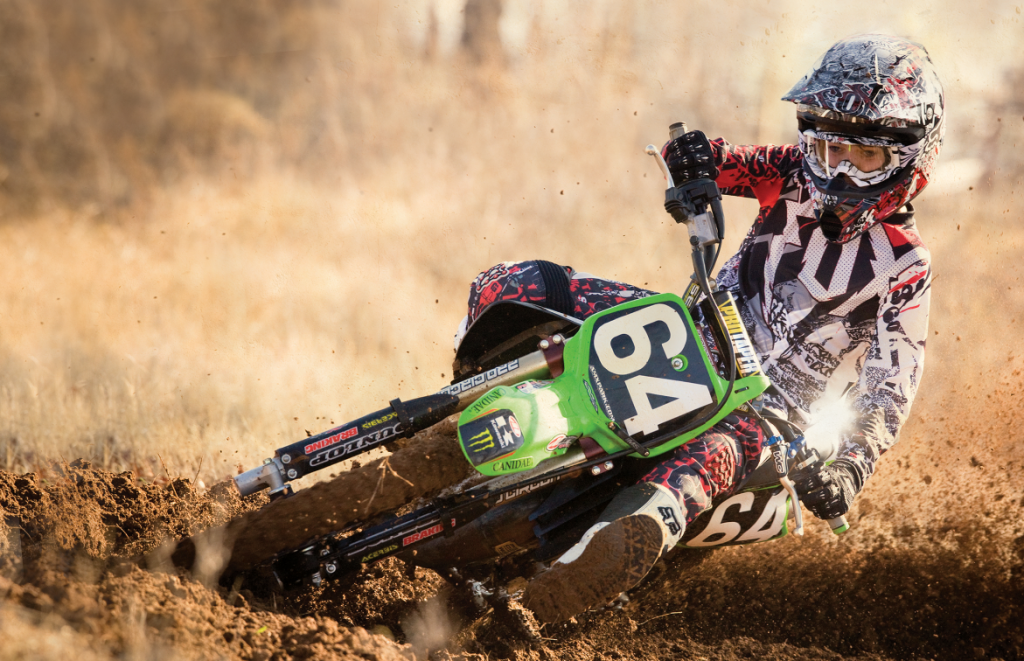
So, there you go. Follow these pointers and you will want to forget about road riding and who knows, you may devote yourself to adventure riding. These tips may seem complicated at first, but they are actually rather simple and straightforward when you put them together.
Enjoy that waterfall!
© Copyright – BikesRepublic.com 2024 Trademarks belong to their respective owners. All rights reserved